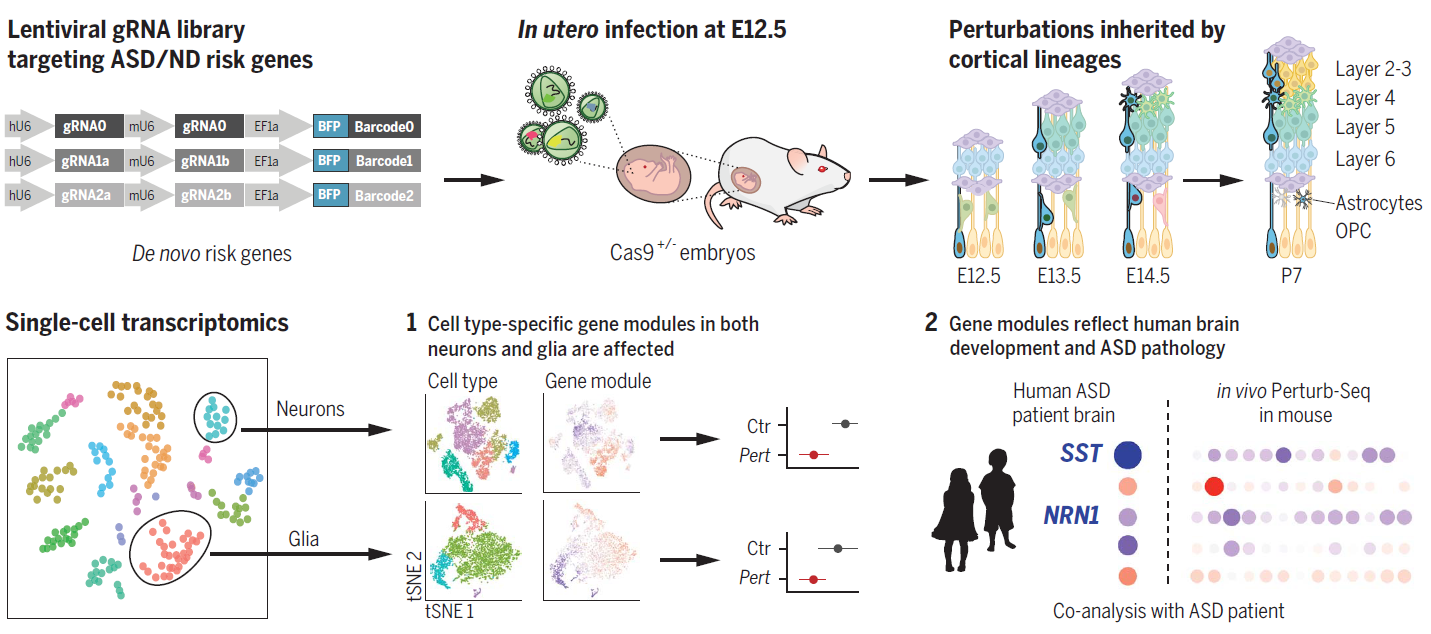2020-12-9 By Quick Biology
Autism is a serious developmental disorder that impairs the ability to communicate and interact. According to the Centers for Disease Control, autism affects an estimated 1 in 54 children in the United States today. It is a genetic disorder in multiple genes.
Perturb-seq refers to a high-throughput of performing single-cell RNA sequencing on pooled genetic perturbation screens. Perturb-seq combines multiplexed CRISPR mediated gene inactivations with single-cell RNA sequencing to assess comprehensive gene expression phenotypes for each perturbation. It investigates gene functions in many cells in a massively parallel fashion (ref1).
In recent Science, Dr. Feng Zhang, Dr. Aviv Regev, and Dr. Paola Arlotta teams from Broad Institute and Harvard selected 35 autism spectrum disorder/neurodevelopmental delay (ASD/ND) de novo risk genes. Using CRISPR-cas9, they perturbed these genes (mutations in 35 risk genes) in pools in Utero at E12.5, followed by transcriptomic profiling of the cellular progeny of these perturbed cells at P7 by means of single-cell RNA-seq. t-distributed stochastic neighbor embedding (t-SNE) analysis revealed cell type-specific gene modules in both neurons and glia are affected. By comparing to human brain ASD pathology, researchers excited found that Perturb-Seq gene modules discovered in mouse is conserved in human, mouse Perturb-Seq results are correlated with expression changes in ASD patient brain tissues (Fig.1, ref2). This work provides a great strategy (i.e., In vivo Perturb-Seq) to investigate how diverse mutations affect cell types and states in the developing organism.
Figure 1: Schematic Diagram of in vivo Perturb-Seq in the mouse model. (ref2)

Quick Biology provides CRISPR Library screenings. Find More at Quick Biology.
See resource:
1. Wikipedia: https://en.wikipedia.org/wiki/Perturb-seq
2. Jin, X. et al. In vivo Perturb-Seq reveals neuronal and glial abnormalities associated with Autism risk genes. Science 370, eaaz6063(2020).



